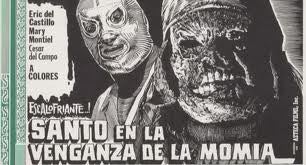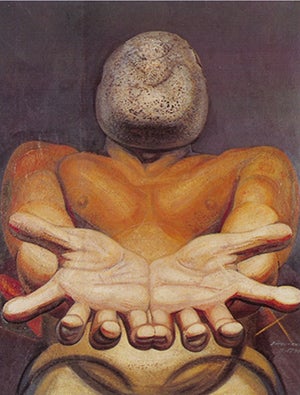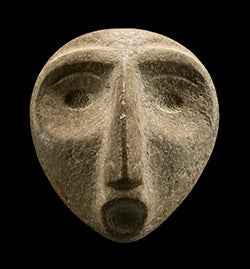Last Tuesday, I attended an all day workshop at the Getty Research Institute in the Getty Center complex, high above the L.A. freeway, with magnificent views towards downtown to the East and the Pacific Ocean to the West. Invited were SoCal curators who had participated in “Pacific Standard Time: Art in L.A., 1945-1980,” a Getty Foundation organized and funded citywide exhibition in 2011 involving over fifty institutions. UCLA Film & Television Archive contributed the film program and catalogue, “L.A. Rebellion: Creating a New Black Cinema,” to the event, which is still touring.

Now the Getty has announced “Pacific Standard Time: L.A./L.A.” the first initials standing for Latin America, the second set for the city. That is of course a timely endeavor, given that our region has now returned to its earliest post Native American state as Spanish-speaking in the majority. The problem is that few of the participating museums in PST have Latin American specialists on their staff, other than the Museum of Latin American Art in Long Beach (MOLAA). Since one of the principle objectives of the Getty Research Institute’s PST is to encourage new and original research as a first stage of conceptualizing and planning an exhibition, the Getty sponsored this workshop as an introduction to the topic of Latin American art, itself a highly contested term, as the subsequent discussion demonstrated. They also strongly encouraged the audience to partner with Latin American specialists and national institutions. As for the curators, many came in search of an exhibition idea, in order to be able to apply for PST2, and were certainly given a crash course in art historical debates re L.A. (the 1st, not the 2nd) art.

Most of us north of the Rio Grande take the term Latin America for granted, blissfully unaware of the fact that its origins are colonialist and that the inhabitants in all those many different countries due South, don’t ever think of themselves as Latin Americans. They are Argentine, Brazilian, Chilean, Dominican Republican, Ecuadorean, etc. Latin American is U.S. State Department terminology to delineate geographically the enforcement of Monroe Doctrine policies, whether under the guise of Office of the Coordinator of Inter-American Affairs (1940s) or Alliance for Progress (1960s). For all the Anglos in the United States and Canada, Latin America also signifies the other, as a much more uncomfortable hybridization of European, Native and Afro American cultures, whereas
they had simply practiced a more efficient form of genocide against their own indigenous peoples.
After all the discussion, however, about the term’s negative connotations and its obfuscation of the Continents’ diversity, everyone agreed that art history as a profession could no longer banish the words Latin America. It has become institutionalized in the mushrooming of Latin American Art exhibitions, the international exposure of numerous “Latin American” artists at art biennales, and the number of Latin American specialists hired into traditional university art history departments since the 1990s. Interestingly, curators and galleryists, rather than the Academy, led the charge for the acceptance of art produced outside the Euro-(North)American axis, whether historical or contemporary. One panelist showed a slide of his now “humongous” Latin American art catalogue/book collection, to prove the point. Indeed, except for pre-Columbian art, which was somehow divorced from all that came after it, Latin American art was considered “inferior” to “Western” art, a pale imitation of European and American art isms. Latin American art didn’t fit in. It suffered from the stigma of derivativeness. Now all that has changed. International art biennales, whether in Venice, Sao Paulo, Sydney or Miami, -- the last named immortalized by Tom Wolfe in his novel, Back to Blood (2012) -- have launched careers of individual Latin American artists, as their marketplaces simultaneously level all difference between nationalities, ethnicities, class, and gender. A number of the panelists, many of them curators and/or professors mentioned their own success as Latin American art specialists, once the subject was in.
 Given all this, we were left with some important advice: Make it an archeological project. In other words, work from facts to recontextualize the national and the particular in the international. While traditional art historians prefer biographical and formalist paradigms to structural art history, newer methodologies ask for comparative studies that research artist networks within a frame of multi-cultural studies, identity politics and the examination of difference. For me, as admittedly for a few others, it was déjà vue all over again, in my case, because cinema and media studies have long ago fought and won those battles within the larger arena of cultural studies.
Given all this, we were left with some important advice: Make it an archeological project. In other words, work from facts to recontextualize the national and the particular in the international. While traditional art historians prefer biographical and formalist paradigms to structural art history, newer methodologies ask for comparative studies that research artist networks within a frame of multi-cultural studies, identity politics and the examination of difference. For me, as admittedly for a few others, it was déjà vue all over again, in my case, because cinema and media studies have long ago fought and won those battles within the larger arena of cultural studies.
A very educational day, nevertheless, even though, happily, I already came to the workshop with a topic in hand; but that will have to wait for a subsequent blog.






 Mobile Navigation
Mobile Navigation

